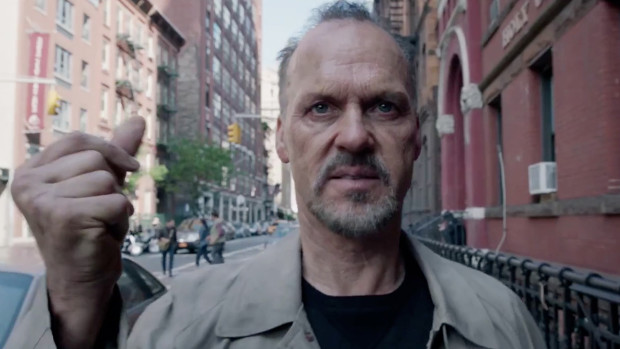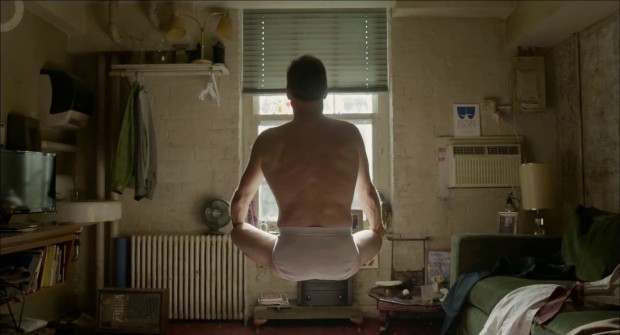You have no items in your cart. Want to get some nice things?
Go shopping
Alejandro Iñárritu’s Oscar-contender Birdman is about an actor on the brink of insanity. It’s an exhilarating, captivating and funny experience that brilliantly transports you into the weird world of Riggan Thomson, a washed up former superhero star (played with no small irony by Michael Keaton) who has invested everything – emotionally and financially – into one last shot at the big time. The stress evidently takes it toll and we, the audience, are left wondering how much of the bizarre happenings occur inside Riggan’s head, or if any of it is really happening at all
Does it sound vaguely familiar? That’s because it is. For all its technical virtuosity and witty originality, Birdman still sits firmly in one of Hollywood’s favourite sub-genres: the Tale of the Mad Artist. What distinguishes this group of films from other stories of madness is that they tend to remain ambiguous as to whether art can be born of madness, or madness is born of art.
Most of Hollywood’s ‘descent into madness’ tales follow individuals whose psychoses are rooted in trauma. They might be war veterans (Taxi Driver, Jacob’s Ladder, Apocalypse Now), witnesses to murder (Shutter Island) or victims of modern society’s ridiculous pressures (Fight Club, Falling Down). Many of them will be predisposed towards madness, and the events of the story simply trigger or reveal the depth of their insanity. This puts a natural distance between us ‘normal’ viewers and the protagonists of these dramas, allowing us to pity them safe in the surety of our own sanity. To further reassure us, the majority of these films offer external forces as the cause of madness. Even if their narratives end in tragic destruction, there is always some comfort to be taken from the fact that their insane behaviour is the result of something extraordinary: as long as the same horrible events don’t happen to us too, we’ll be okay.
However, in the select group of Mad Artist films, there isn’t such a placation. The madness does not have an external origin and cannot be blamed on any villain’s scheme, because it is inextricably linked to artistic expression, which can only come from within (how flattering for the filmmakers…). In films this happens to painters, actors, directors and writers alike. Usually the closest we can get to making the artist a victim, rather than a source, of insanity is the implication that they serve some divine purpose, and are merely vessels for spiritual communication to the human race. There is the odd exception to this, like The Shining‘s Jack Torrance who is arguably a victim of a haunted hotel, but even this example might not count because it moves out of the conventional ‘tortured artist’ genre and into horror territory. Even if we include it, The Shining remains a rare example of where the source of the artist’s madness is given an explanation (albeit a tentative one).
Hollywood’s recurring fascination with artistic insanity is the question it poses about the indefinable link between the mind and the spirit: if art comes from the well of the soul, then art from a deranged person indicates a pretty disturbed soul. Most people would want to avoid, shun or commit such a person. But when the art they produce is transcendental and transformative, should we emulate them or fear them even moreso? Is their ability unnatural, or are they especially in tune with the universe in a way that we normal folk cannot fathom? Most filmmakers tend towards the latter interpretation, if only because they aspire to be regarded as artists in the same light; but the ambiguity always remains, because few filmmakers want to label themselves as crazy.
Thus the film industry’s fascination continues: each writer and director is free to add their own interpretation of the ‘mad artist’ phenomenon to screen because no-one has yet fully answered the question. The closest they ever seem to get is that art can help overcome madness, and we should sympathise with the tortured souls of these singular creators. Handily, there will always be a long queue of actors and producers willing to help get these films made, since they are the meatiest of roles to play and the best chance at getting noticed in awards season (after Presidential dramas and Holocaust accounts, it seems).
There tend to be two chief aspects to the approaches taken by filmmakers to the question of the ‘mad artist’. One is to propose that madness inspires expression through art; the other is that the all-consuming passion of art is maddening. Consequently the two most popular ways to portray artistic madness are to either focus on an anonymous character who goes mad (Black Swan) or deliver a study of a historical artist with a known psychological disorder. The latter tends to reflect the truth more honestly (Shine, A Beautiful Mind) but this also produces the most ambivalent conclusions, since few biopics are willing to unsympathetically condemn their subjects as simply off their rockers. The former allows for the most creativity in depicting delirium – and this is what Birdman chooses to do.

However, what sets Birdman apart is Iñárritu’s fearlessly comedic tone. As is often the case in this genre, Keaton’s brilliantly played character is presented as ‘different’ to begin with, but here his nutso nature is established from the opening shot so that the entire endeavour could be seen as the product of a disturbed psyche. Birdman‘s ambivalence is established from the first frame, allowing for a pleasingly surreal trip down Kooky Lane. The joke doesn’t stop there: in a cleverly meta fashion, it also satirises the standard satires of ‘mad Hollywood’. Rather than merely suggesting you have to be mad or ruthless to succeed in the creative business, it suggests that creativity itself is madness. By having the plot centre around film stars staging a play adaptation of a Raymond Carver story, Birdman conflates the worlds of prose fiction, theatre and film in one big mess of lunacy. Perhaps most subversively, Birdman‘s conclusion suggests that madness is actually a positive force that can ease the pain of creation; but its ambiguous ending could be interpreted to mean precisely the opposite. So Iñárritu manages to simultaneously fulfil and subvert the standard requirements of the ‘mad artist’ sub-genre. Maybe it’s because he understands that the stress of getting any movie made is enough to cause nervous breakdowns.

About Robin McConnell
Robin is an obsessive film fanatic and occasional person. When he is not watching films or editing Litro Film & Media he can be found writing and producing the Alltime channels on Youtube. He is often distracted by the need to write scripts and short stories.




